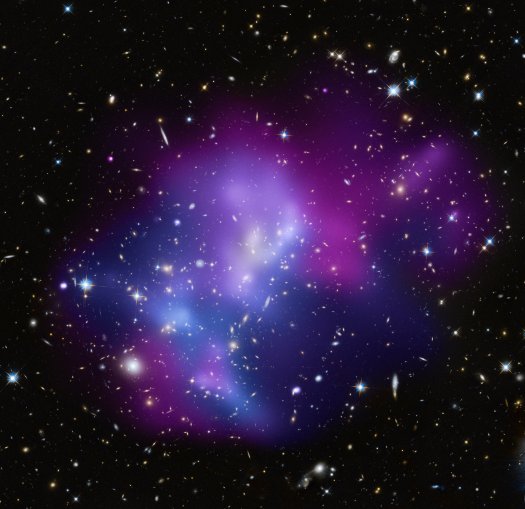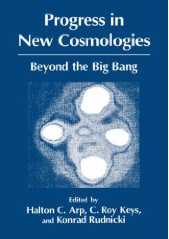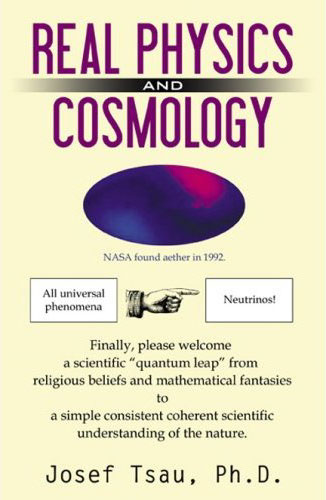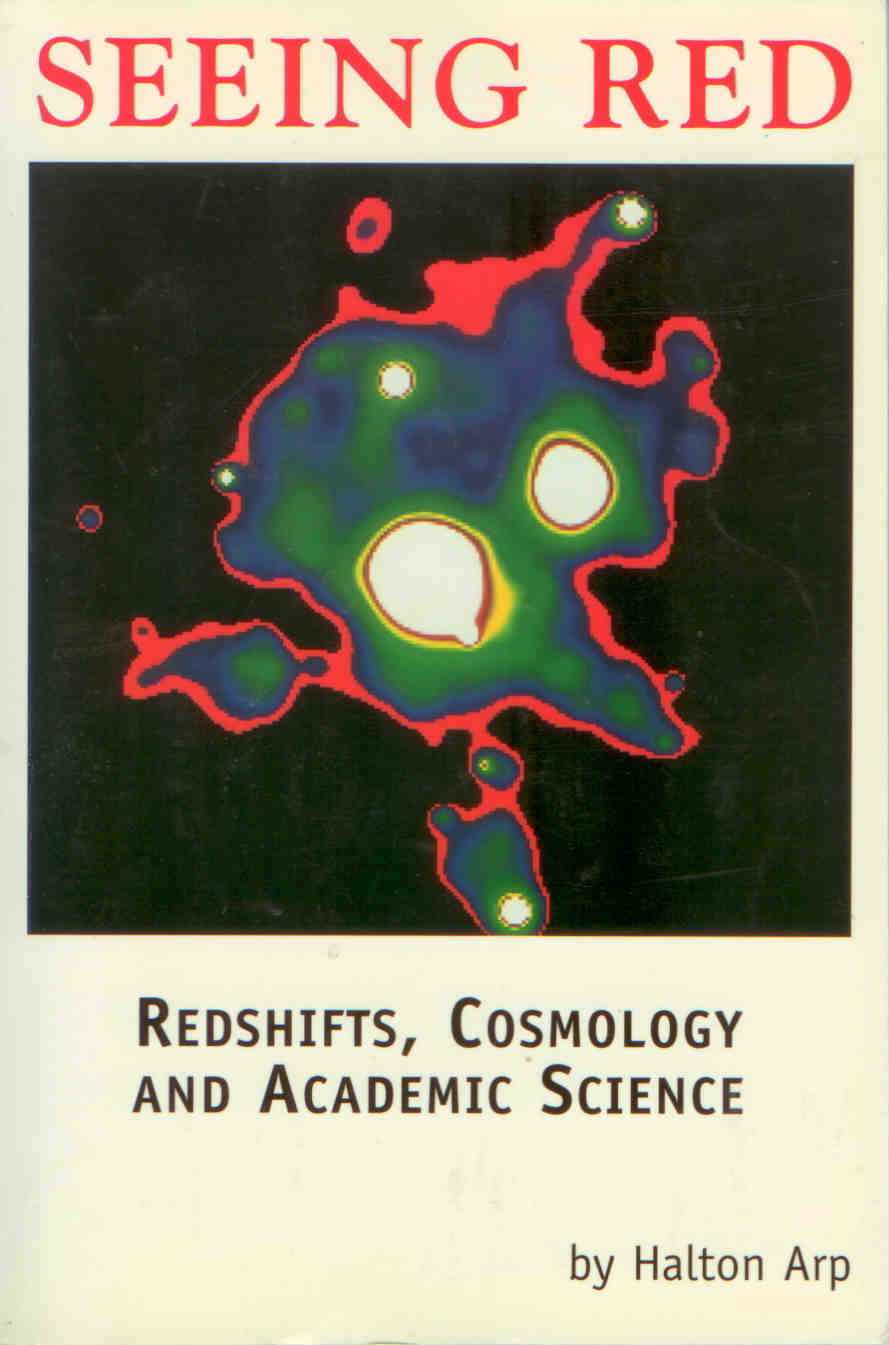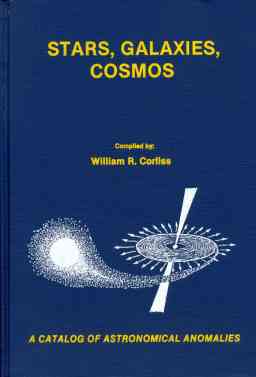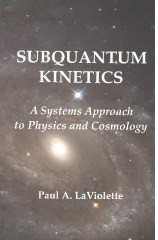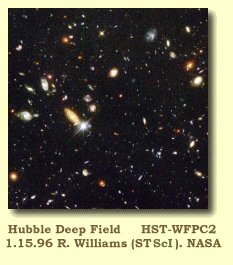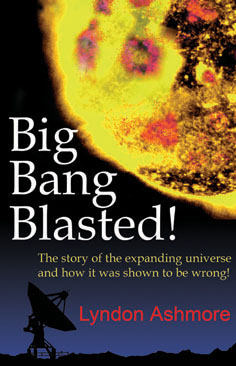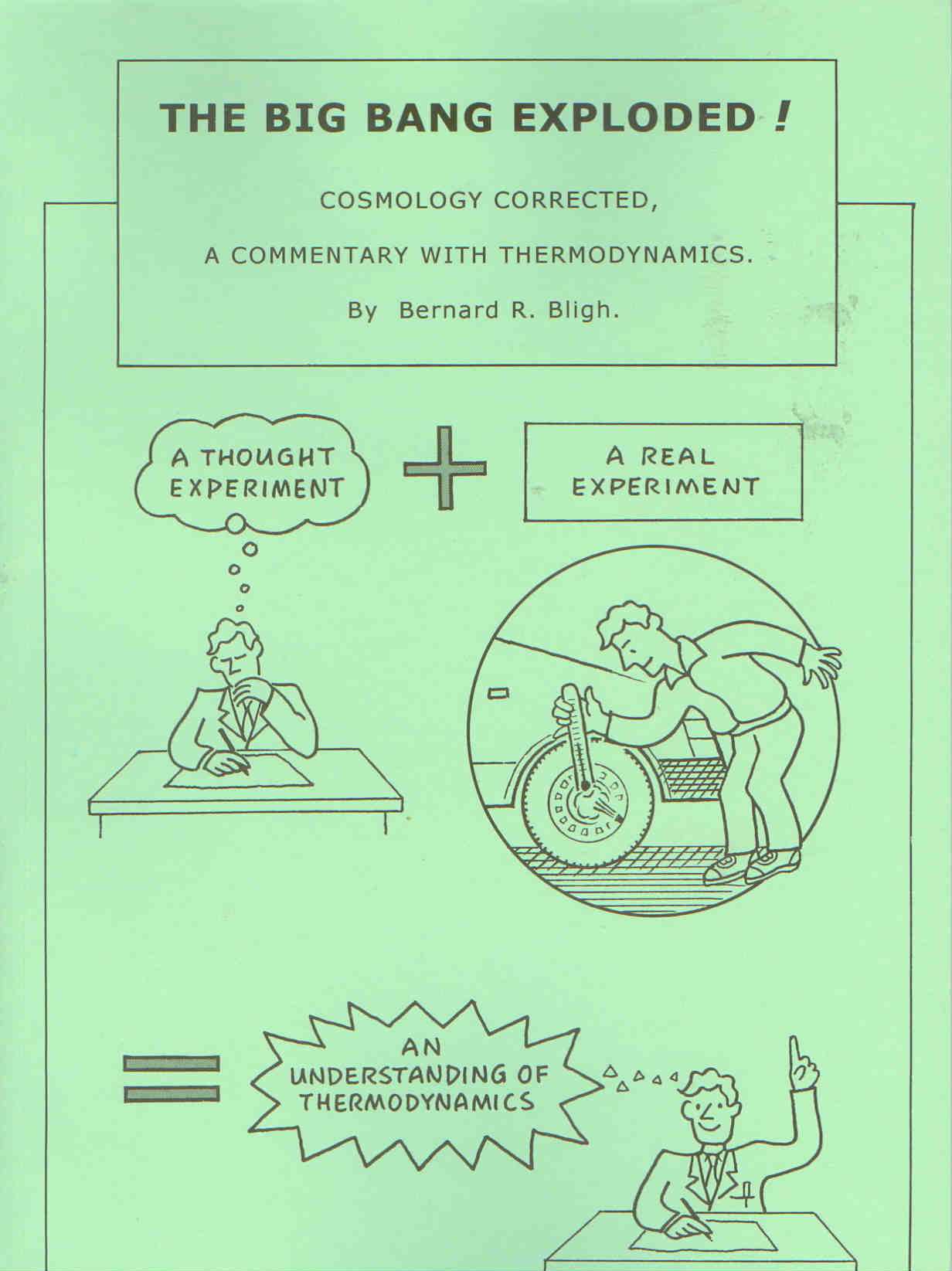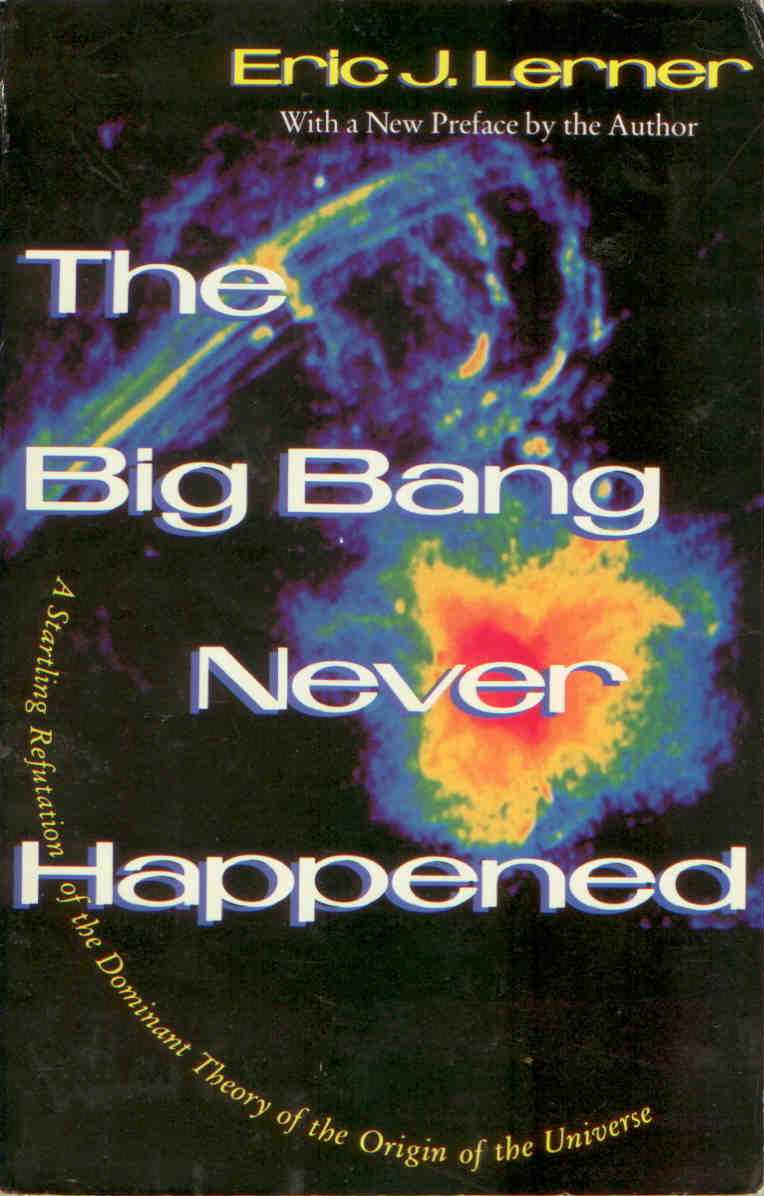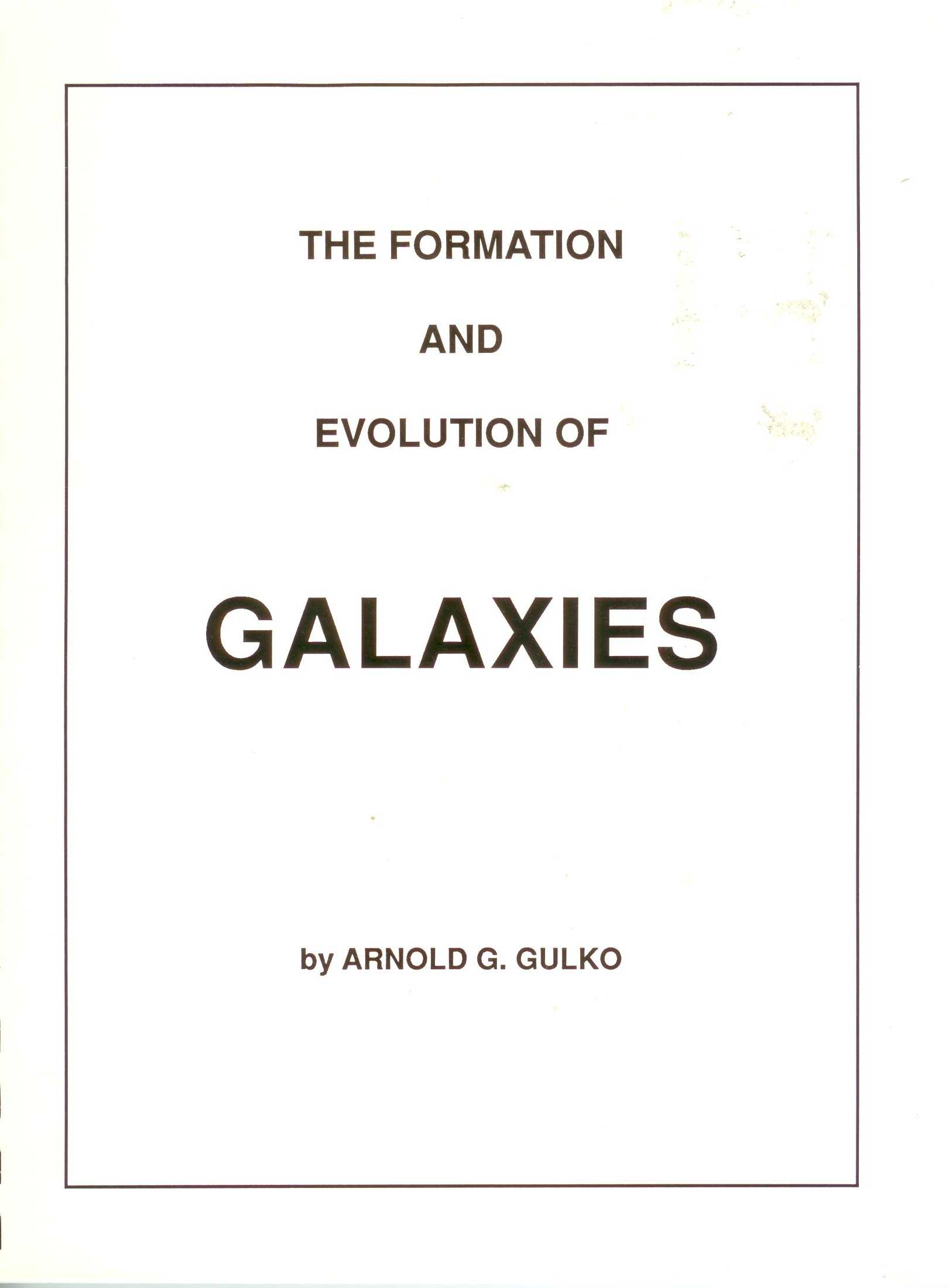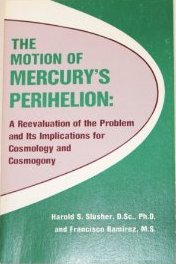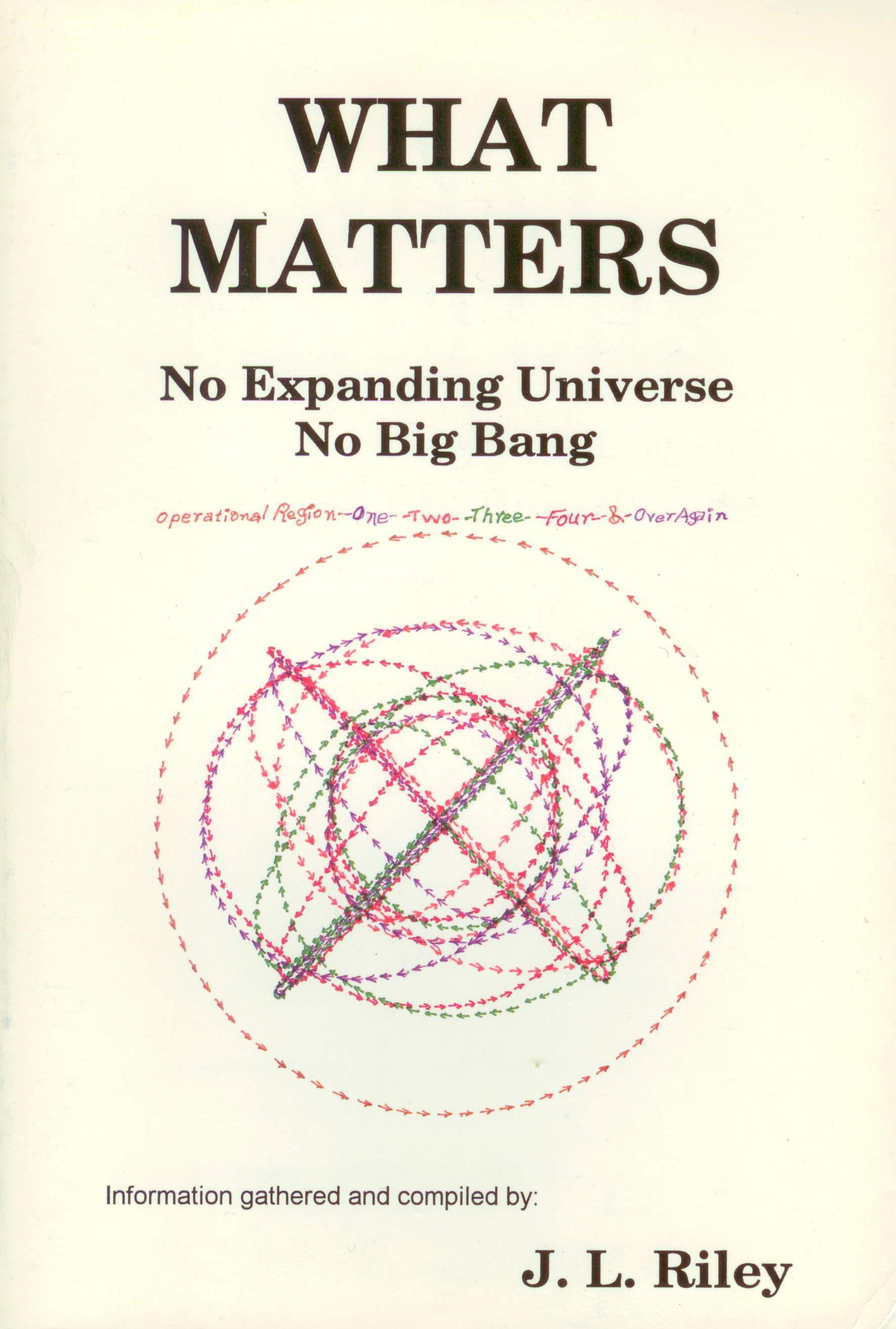(See right-hand panel for a full list of scientists, papers, and books)
Pages: 198
Publisher: J.J. Corbett Press
Year: 1982
ISBN: 0960815201
ISBN: 978-0960815203
Websites: www.einsteinserror.com
Pages: 308
Publisher: Springer
Year: 1995
ISBN: 0792337840
ISBN: 978-0792337843
Today many scientists recognize plasma as the key element in understanding new observations in interplanetary and interstellar space, in stars, galaxies, and clusters of galaxies, and throughout the observable universe. Plasma astrophysics and cosmology, as a unified discipline, cover topics such as the large scale structure and filamentation of the universe; the microwave background; the formation of galaxies and magnetic fields; active galactic nuclei and quasars; the origin and abundance of light elements; star formation and the evolution of solar systems; redshift periodicities and anomalous redshifts; general relativity; electric fields; the acceleration of charged particles to high energies; and cosmic rays.
Plasma Astrophysics and Cosmology is an update on the observations made in radio, optical, and high-energy astrophysics, especially over the last decade, and addresses the paradigm changing discoveries made by the planetary probes and satellites, radio telescopes, and the Hubble space telescope. Over twenty contributors, all distinguished plasma scientists, present an entirely new picture of the nature of our plasma universe with articles ranging from the popular level to advanced topics in plasma cosmology.
Pages: 376
Publisher: Springer
Year: 1994
ISBN: 0306446359
ISBN: 978-0306446351
Websites: www.haltonarp.com en.wikipedia.org/wiki/Halton_Arp
Proceedings of the Thirteenth Cracow Summer School of Cosmology on Progress in New Cosmologies, held under the auspices of the Omega Foundation and Apeiron, September 7-12, 1992, at the Physics Institute, University of L?d?, L?d?, Poland.
Halton Arp is the last of the creative thinkers in astronomy today. Being an astronomer, he is always careful to provide his readers with facts to back up his conclusions. This is another good, informative book. - Amazon customer
Pages: 126
Publisher: Infinity Publishing
Year: 2007
ISBN: 0741438518
ISBN: 978-0741438515
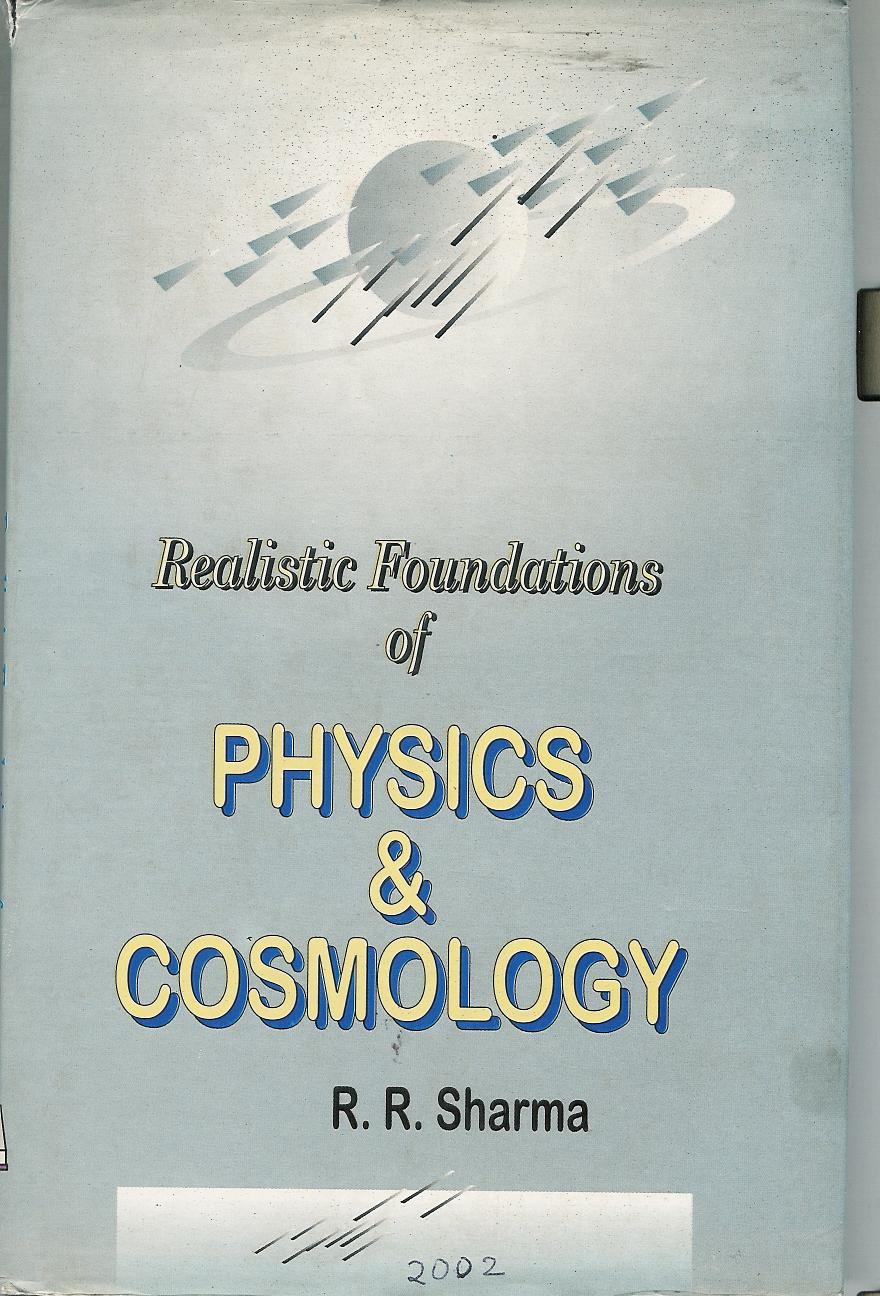
View count: 1
Pages: 215
Publisher: Abhishek Publications, 57-59, Sector 17C, Chandigarh, India
Year: 2002
ISBN: 8185733279
Websites: www.physicsrevolution.com
Pages: 306
Publisher: C. Roy Keys Inc. (Apeiron)
Year: 1998
ISBN: 0968368905
ISBN: 978-0968368909
Websites: www.haltonarp.com en.wikipedia.org/wiki/Halton_Arp
"Seeing Red" represents a senior scientist's personal account of the crisis in moderrn astronomy. Dr. Arp presents observations showing that extragalactic redshifts are not caused by an expanding universe. He crafts up an empirical picture of the birth and evolution of quasars and galaxies, demonstrating that crucial observations have been ignored and suppressed by the astronomy community. Finally, he cites examples of how academic science fails its ideals and potential. - Amazon
Pages: 246
Publisher: Sourcebook Project
Year: 1987
ISBN: 0915554216
ISBN: 978-0915554218
Websites: www.science-frontiers.com
Optical bursters and flare stars * Estorical color change of Sirius * Infrared cirrus clouds * Quasar-galaxy associations * The red-shift controversy * Quantization of red shifts * The quasar energy paradox * Apparent faster-than-light velocities in quasars and galaxies * Evidence for universal rotation * Swiss cheese structure of universe * Is the "missing mass" really missing ? * Superluminous infrared galaxies * Shells around elliptical galaxies
Pages: 318
Publisher: Starlane Publications
Year: 2003 2nd ed
ISBN: 0964202557
ISBN: 978-0964202559
Websites: www.etheric.com/LaViolette/LaViolette.html www.topsecrettestimony.com/Witnesses/AllWitnesses/DrPaulLaViolette/tabid/259/Default.aspx
This is the second expanded edition of a book originally entitled Subquantum Kinetics: The Alchemy of Creation. Its contents are as follows:
- Overview of the Methodology
- Basic Concepts
- Model G
- The Emergence of Particles and Fields
- Fields and Forces
- Energy Wave Behavior
- The Cosmological Redshift
- Matter Creation
- Genic Energy
- Stellar Evolution
- Electrogravitics
- Conclusion
It contains four Appendices:
- Subquantum Kinetics Predictions and their Verification
- The Differential Number Count Test
- The Pioneer Maser Signal Anomaly
- Areas Requiring Further Investigation
The essence of subquantum kinetics is that the basis of physical existence is process. That is, instead of considering the particles of matter as closed systems, subquantum kinetics conceives only open systems always exchanging particles and energy with the surrounding environment. It also postulates the existence of an etheric sea filled with subquantum entities, the etherons. For this reason it requires an absolute reference frame in space, the ether frame.
In the interesting Chapter 5 about Fields and Forces the author considers magnetism as being due to a moving electric potential field. In particular he calls attention to Ampere's force between current elements, an expression which is rarely to be found in modern physics textbooks. Instead of that we only find Grassmann's force (based on Biot-Savart's expression of the magnetic field of a current element and compatible with Lorentz's force). Despite this fact is should be remembered that Maxwell himself knew both expresssions for the force between current elements (those of Ampere and Grassmann).
In his masterpiece, A Treatise on Electricity and Magnetism, Vol. 2, page 174, paragraph 527, Maxwell compared these expressions and concluded that Ampere's force is undoubtedly the best, since it made the forces on the two elements not only equal and opposite but in the straight line which joins them. Grassmann's force, on the other hand, does not comply with action and reaction (the same as regards Lorentz's force). In the next page, paragraph 528, Maxwell said that Ampere's force should always remain the cardinal formula of electrodynamics. La Violette presents many relevant references related with the experimental and theoretical controversy Ampere versus Grassmann-Biot-Savart-Lorentz. In Chapter 6 he presents what he considers as flaws in Maxwell's equations. He also discusses Weber's electrodynamics, a theory developed by Maxwell's contemporary Wilhelm Weber, a collaborator of Gauss.
The author extends the idea of open systems to the whole universe, considering it infinite in extent and probably of eternal duration. He is against the big bang and against the expanding universe hypothesis. He developed these ideas in an earlier book, Beyond the Big Bang (Park Street Press, 1995), and in an important paper, P. A. LaViolette, Astrophysical Journal, Vol. 301, pp. 544-553 (1986), "Is the Universe Really Expanding?"
Instead of the big bang he proposes a tired-light model in which the photon loses energy to the intervening medium as it travels from a distant galaxy towards us. This creates a redshift and yields an alternative explanation of the cosmological redshift. He shows at length that the tired-light model yields a better fitting to the data than the big bang model based on the Doppler effect, in different tests: the angular-size-redshift, the Tolman surface brightness, the Hubble diagram, the galaxy number count magnitude, supernova data and the redshift quantization effect.
This book has a great amount of references, especially related to astrophysics and cosmology. It has clear and convincing criticisms of the big bang. Contains open discussion of relevant topics of modern physics. For these reasons I recommend it to all people interested in the foundations of science and in the deeper questions of nature. Andre Koch Torres Assis, Amazon
Publisher: Center of the Universe Publishing Company
Year: 1999
Websites: allnewuniverse.com
What amazing discoveries are made. This flat Earth swells and becomes a ball floating in space. Earth leaves the Center of our Universe and finds itself orbiting a minor star surrounded by planets, moons and asteroids. Comets zoom through the void past us (some even hits us.)
With amazement, the structure of the milky Way is defined, including us on Earth as part of this Milky Way Galaxy. The scope of our Universe grows, finding ourselves and our local family of twenty or so galaxies sailing along among billions of galaxies. There's more, the apparent staid motion of the night sky unveils itself to expose a massive outrushing in all directions; that points to a violent beginning and an undefined ending.
More mysteries are found. Quasars, the very faint, shining star-like pinpoints of light are found near the edges of our Universe. The mystery of Quasars staggers the imagination, expanding unbelievable amounts of energy, greater than any galaxy times a hundred or more.
Pages: 306
Publisher: BookSurge Publishing
Year: 2006
ISBN: 1419639226
ISBN: 978-1419639227
Websites: www.lyndonashmore.com
What the author has done here is to go back to the beginning and start again. He follows the history of the Big Bang and the characters involved - explaining at every step how it was done.
He then introduces 'Ashmore's Paradox' and shows that after all these years of searching for the Hubble constant, all they ended up with was something any schoolchild could have found by recalling three very common physical constants from their calculator memory!
Lyndon explains that redshift - originally thought to show that the Universe is expanding, is just an effect caused by photons travelling through space and losing energy to electrons. From this, he goes on to explain the CMB and other observations normally associated with an expanding Universe. - Back cover
Pages: 112
Publisher: Bernard Ramsay Bligh
Year: 2000
ISBN: 0953877604
ISBN: 978-0953877607
Websites: altcosmology.com
The Big Bang Exploded is essential reading for all cosmologists and their students because existing textbooks on Cosmology and Astrophysics contain numerous errors in Thermodynamics and this book aims to correct these mistakes. It will also be of considerable value to students and lecturers in all science and technology, conveying "a feel for Thermodynamics".
The Hot Big Bang Theory postulates that the early Universe was at a very high temperature, and that the expansion of the Universe automatically brought about cooling from high to low temperatures. But the belief by cosmologists that expanding gases always cool down is not true; the free expansion of an ideal gas is a constant temperature process.
The nub of this subject is that thermodynamic calculations on the Hot Big Bang Theory, when done correctly, show conclusively that the theory is fallacious (PART 3). But first it is necessary to show both the basis for doing the calculations and the physical data required. Therefore PART 1 provides the groundwork for thermodynamic calculations and PART 2 analyzes the errors in books on Cosmology.
The book includes extensive thermodynamic calculations for hydrogen and a Temperature-Entropy Diagram. - Excerpted from the Introduction
Pages: 496
Publisher: Vintage
Year: 1992
ISBN: 067974049X
ISBN: 978-0679740490
Websites: www.bigbangneverhappened.org
Plasma physicist Lerner opens one of science's inner rooms to a popular audience in this headline-making history of time, space and the humanistic sociology of science. Illustrated.
Copyright 1992 Reed Business Information, Inc.
From Library Journal
From Steven Weinberg's The First Three Minutes (Basic, 1976. o.p.; 1988. pap.) to Stephen Hawking's A Brief History of Time ( LJ 4/15/88), numerous science popularizations have expounded the Big Bang Theory for the origin of the universe as indisputable fact. Readers of those books will find this one startling and intriguing. Lerner, a plasma physicist, points out flaws in the Big Bang model and proposes an alternative theory: an eternal, self-sustaining "plasma" universe where electromagnetic fields within conducting gases provide other, simpler explanations for observed phenomena. His contention that the Big Bang is merely a repackaged creation myth is presumptuous, but well argued. To present a current scientific controversy to a general audience risks, on one hand, misleading the public and, on the other, circumventing the peer review process. This book, however, makes valid points in a convincing manner and does neither. Recommended for general science collections.
- Gregg Sapp, Montana State Univ. Libs., Bozeman
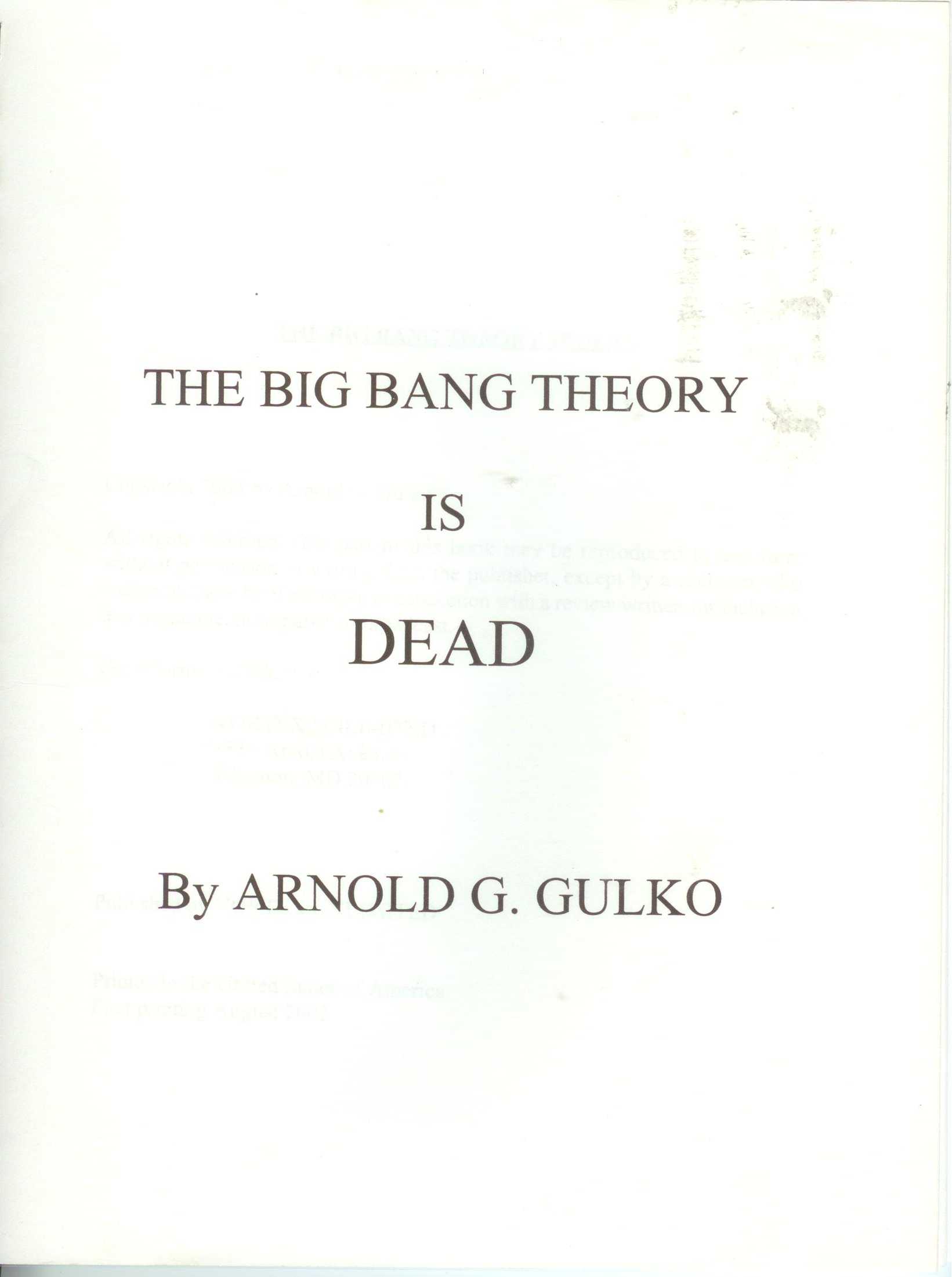
View count: 1
Pages: 240
Publisher: Cosmic Sense Books
Year: 1994
ISBN: 0964318806
ISBN: 978-0964318809
Websites: hometown.aol.com/wmitch8493/myhomepage/index.html
Pages: 101
Publisher: Institute for Creation Research
Year: 1984
ISBN: 093276617X
ISBN: 978-0932766175
ISBN: B0006YPWTY
Pages: 44
Publisher: Cortney Publications
Year: 1981
ISBN: 090437811X
ISBN: 978-0904378115
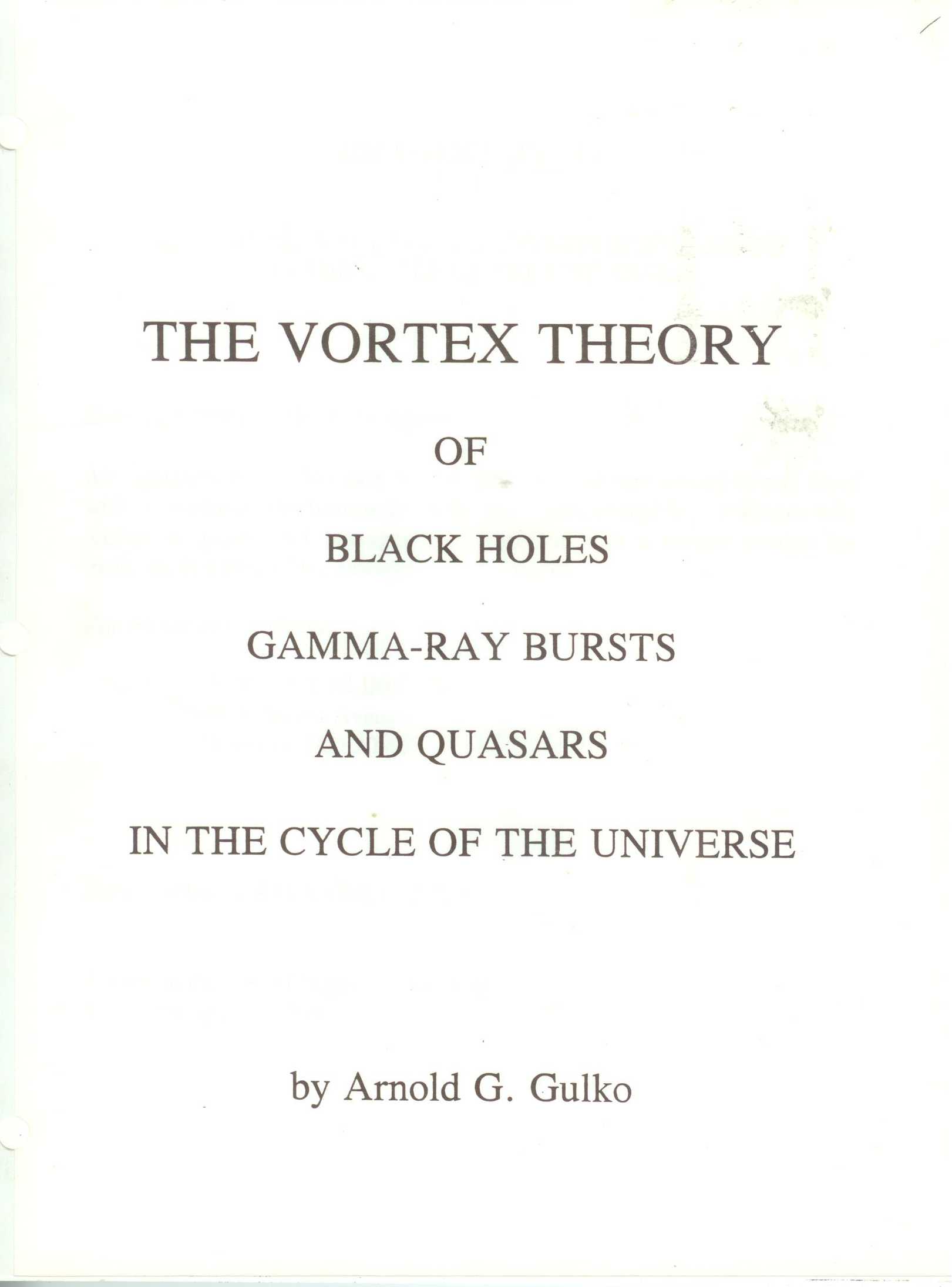
View count: 1
Pages: 227
Publisher: No Big Bang Publishing
Year: 1993
ISBN: 1963684213
ISBN: B002R903CC
ISBN: B0006P8628
Astronomical experts acclaim the big bang theory as the only explanation for the expanding universe. The big bang has problems in that it requires breaking laws of physics. Nevertheless, it has been fully accepted as an actual fact. But! Can it be proven? Peer review and referees claim any other idea is pure metaphysics and has no place in science.
Such thinking equates back to the time of Galileo when it was thought the earth was the center of the universe where the sun rotated around the earth. The idea the universe is expanding comes from the predominate red shift of the distant universe in all directions. The Doppler effect can be an explanation for this phenomenon.
A great advance will be made in astronomy when astronomers come to realize not all red shift is the results of a Doppler shift from receding velocities. This will become quite apparent when they are able to differentiate Doppler from other forms of red shifting.
A good place to start is in explaining the Doppler effect. "A receding body has its light shifted down in the red direction depending on the velocity of recession." We cannot deny Doppler shifting for it does operate according to the statement. But examine the statement. If a frequency is shifted to another frequency it is another frequency and it no longer is the original This new frequency cannot tell us what its original frequency was before it was shifted. Therefore, we would be unable to determine how much shifting had occurred.
What has been explained to us as Doppler shifting still has the original frequency appearing to be displaced to a lower frequency. From this information we can determine how much the frequency appears to be shifted.
Since the original frequency is still present the effect cannot be interpreted as Doppler, because the original frequency still contains portions of the original frequency. There has to be some other reason for what we see other than Doppler. This becomes quite apparent in the Chapter on Time we have presented in this book.
In this book we point out there are other means of red shifting and how to distinguish the difference. We discuss how light propagates and some of the other operations this energy can employ. It requires energy to propagate or transfer energy through space. We go into some detail about this energy called light...
Pages: 268
Publisher: Penso Publications
Year: 1982
ISBN: 0943796008
ISBN: 978-0943796000

